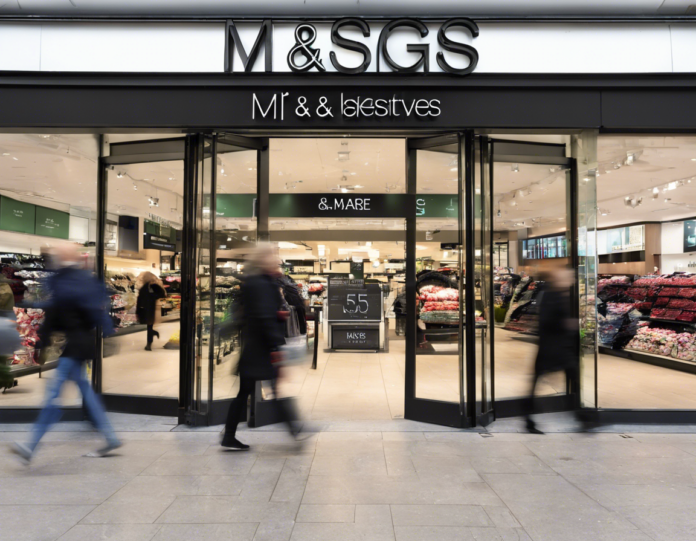Retail giant Marks & Spencer, a British institution with a legacy dating back to the late 19th century, is facing a significant transformation in its store portfolio with a planned closure of multiple stores in 2024. This move comes as part of the company’s broader strategy to adapt to the changing retail landscape, embrace digital innovation, and enhance its overall performance. In this blog post, we will delve into the reasons behind this decision, its potential impact, and the future direction of Marks & Spencer in light of these changes.
Evolution of Retail Landscape
The retail industry has been undergoing a profound transformation in recent years, driven by shifting consumer preferences, technological advancements, and the rise of e-commerce. Traditional brick-and-mortar stores have faced increasing competition from online retailers, leading many legacy brands to reevaluate their store networks and strategies. Marks & Spencer, with its extensive network of stores across the UK, has not been immune to these challenges.
Marks & Spencer’s Strategic Shift
In response to these market dynamics, Marks & Spencer has been pursuing a strategic shift towards a more digitally focused and omnichannel retail model. This approach involves integrating its physical stores with online platforms to create a seamless shopping experience for customers. The planned closure of stores in 2024 is a crucial part of this transformation, allowing the company to streamline its operations, reduce costs, and invest resources in areas with higher growth potential.
Focus on Flagship Stores
While some stores may be closing, Marks & Spencer remains committed to maintaining a strong presence in key locations through its flagship stores. These flagship stores serve as strategic hubs for the brand, showcasing its full range of products, offering unique experiences, and serving as centers for brand engagement. By concentrating resources on these flagship locations, Marks & Spencer aims to elevate its brand identity, drive foot traffic, and create memorable shopping experiences for customers.
Embracing Technology and Innovation
As part of its digital transformation, Marks & Spencer is investing in technology and innovation to enhance its customer offering and operational efficiency. This includes initiatives such as click-and-collect services, personalized marketing, and inventory management systems. By leveraging technology, Marks & Spencer can better understand customer preferences, optimize its product assortment, and deliver a more tailored shopping experience both online and in-store.
Sustainable Practices and Ethical Sourcing
In addition to its focus on digital innovation, Marks & Spencer is also prioritizing sustainability and ethical sourcing as part of its long-term strategy. The company has set ambitious goals to reduce its carbon footprint, minimize waste, and support ethical labor practices throughout its supply chain. By aligning its business practices with sustainability principles, Marks & Spencer aims to appeal to a new generation of environmentally conscious consumers and position itself as a responsible corporate citizen.
Frequently Asked Questions (FAQs)
1. Why is Marks & Spencer closing stores in 2024?
Marks & Spencer is closing stores as part of its strategic shift towards a more digitally focused and omnichannel retail model. By streamlining its store portfolio, the company aims to reduce costs, enhance operational efficiency, and invest in areas with higher growth potential.
2. Will Marks & Spencer’s flagship stores be affected by the closures?
While some stores may be closing, Marks & Spencer remains committed to maintaining a strong presence in key locations through its flagship stores. These flagship locations play a vital role in the brand’s strategy and will continue to serve as centers for brand engagement and customer experience.
3. How is Marks & Spencer embracing technology and innovation?
Marks & Spencer is investing in technology and innovation to enhance its customer offering and operational efficiency. Initiatives such as click-and-collect services, personalized marketing, and inventory management systems are among the key areas where the company is leveraging technology to improve its retail capabilities.
4. What is Marks & Spencer doing to promote sustainability and ethical sourcing?
As part of its long-term strategy, Marks & Spencer is prioritizing sustainability and ethical sourcing practices. The company has set ambitious goals to reduce its carbon footprint, minimize waste, and support ethical labor practices in its supply chain, aligning its business practices with sustainable principles.
5. How will these changes impact Marks & Spencer’s future direction in the retail industry?
By adapting to the evolving retail landscape, embracing digital innovation, and enhancing its sustainability practices, Marks & Spencer is positioning itself for long-term success in the industry. The company’s strategic shift towards a more digitally focused and sustainable business model is expected to drive growth, improve customer engagement, and strengthen its competitive position in the market.
In conclusion, Marks & Spencer’s decision to close stores in 2024 marks a significant milestone in its journey towards a more agile, digitally savvy, and sustainable future. By focusing on flagship stores, embracing technology and innovation, and championing sustainable practices, the company is charting a course for continued relevance and success in the dynamic retail landscape. While challenges lie ahead, Marks & Spencer’s strategic vision and commitment to evolution position it well for the future.












